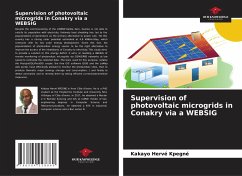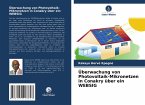Despite the commissioning of the 240MW Kaléta dam, Guinea is not able to satisfy its population with electricity. Untimely load shedding has led to the popularization of generators as the primary alternative to power cuts. Yet this country has a strong solar potential estimated at 4.8 KWH/m²/day, which contrasts with its low solar energy development. Given this fact, the popularization of photovoltaic energy seems to be the right alternative to improve the access of the inhabitants of Conakry to electricity. This study aims to provide a solution to this energy deficit. It aims at realizing a WebSIG of remote monitoring of photovoltaic microgrids via GSM/GPRS networks at low speed to centralize the collected data. The tools used for this purpose, notably the PostgreSQL/PostGIS couple, the free GIS software QGIS and the LizMap web portal, have effectively allowed to monitor the photovoltaic sites, then to produce thematic maps (energy storage and consumption...) and finally to detect anomalies and to remedy them by taking efficient corrective/preventive measures.








